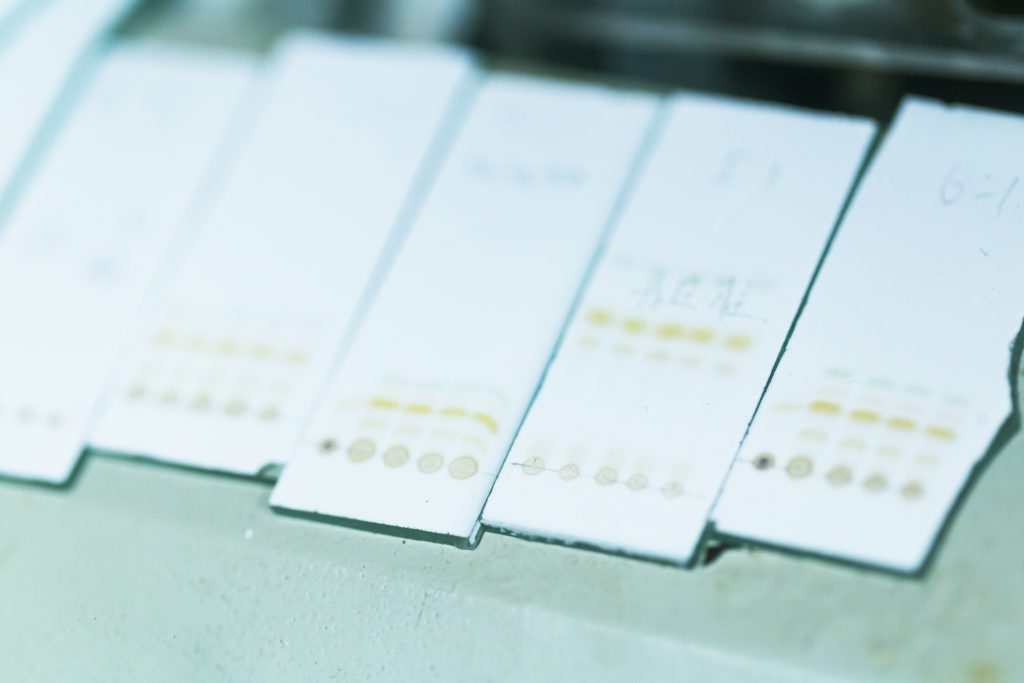For over 40 years, Butterworth Laboratories has provided independent, contract analytical services to the global pharmaceutical and related industries.
Let’s put the TLC back into TLC
27 February 2024
Have we stopped appreciating this chromatographic technique? Perhaps we have, especially those under the age of 40. With the advent of computerised chromatography data systems (CDS) controlling advanced pieces of instrumentation, GC, HPLC, IC, et al., there does appear to be a somewhat unfair dismissal of TLC as the aforementioned chromatography techniques’ inferior sibling.
Those of us old enough to recall earlier revisions of the various pharmacopoeia will no doubt have performed many a TLC for related substances, impurities and the hot topic of ninhydrin positive substances tests. The hands-on visualisation in real-time with the human eye of chromatography at work is lost with modern instrumentation. Okay, so the sensitivity and resolution may be better, but the satisfaction of developing and derivatising your samples is something to be admired, especially if you have had the fortune of using HPTLC for botanical/herbal samples. Such works of art would not be out of place in the National Gallery in London. The author of this piece recalls his time working Down Under in a company that produced numerous herbal remedies. The TLCs produced were astounding in their colours and bands when viewed under ambient laboratory and/or UV light. They were so art-like that they were even given arty names such as “The Enigma of Andalucia” and “Gregorian Mist.” The mere fact they were named demonstrates the appreciation we had for TLC.
So, what happened to the TLC for TLC?
A quick informal ask in our lab has shown that, as mentioned before, those below a certain age consider the technique “archaic”, ”simple”, “old hack”, “slow,” “boring”, and “annoying having to spot the plate.”
All of the above can be refuted immediately. TLC most certainly is neither archaic nor old hack. Yes, it is an early technique and has a few years on HPLC, GC and IC, but the advancements in HPTLC and hyphenated techniques certainly show it is not past its sell-by date by a long shot.
Slow? Is it slow? I bet the people who said that have never used ether as a mobile phase. Furthermore, multiple samples can be developed within the hour with some methods. I bet you can’t do that with most of the fancy chromatography techniques. UPLC excepted, of course.
The ennui suggested is a little harsh. We are chromatographers; TLC allows us to see our samples moving along the stationary phase with our eyes rather than being hidden in a column ensconced in an oven. And as for a detector, the eye. What can be more satisfying than seeing no impurities in your sample or the individual components of St. John’s Wort?
I will concede that sometimes it can be a little annoying spotting a plate and trying to keep the diameter of the spot within the size stipulated in the pharmacopoeia. That is true. But do not forget that there are automated spotters so a hands-free application is available.
Overall, those analysts over a certain age do have a fond appreciation for this simple yet powerful technique, which evokes wonderful memories as eluded to earlier. TLC cannot be that outdated as numerous compendial tests, especially those herbal products (British Pharmacopoeia has plenty of these), still use this quick and relatively cheap technique, and many of our clients still request TLC analyses.
So, despite the perceived old-school label, here at BLL, TLC still finds a home. Our analysts regularly carry out this type of analysis in our chromatography lab, and, yes, they certainly do treat each TLC with the TLC each test deserves.
Andrew Johnson – Senior Analytical Chemist